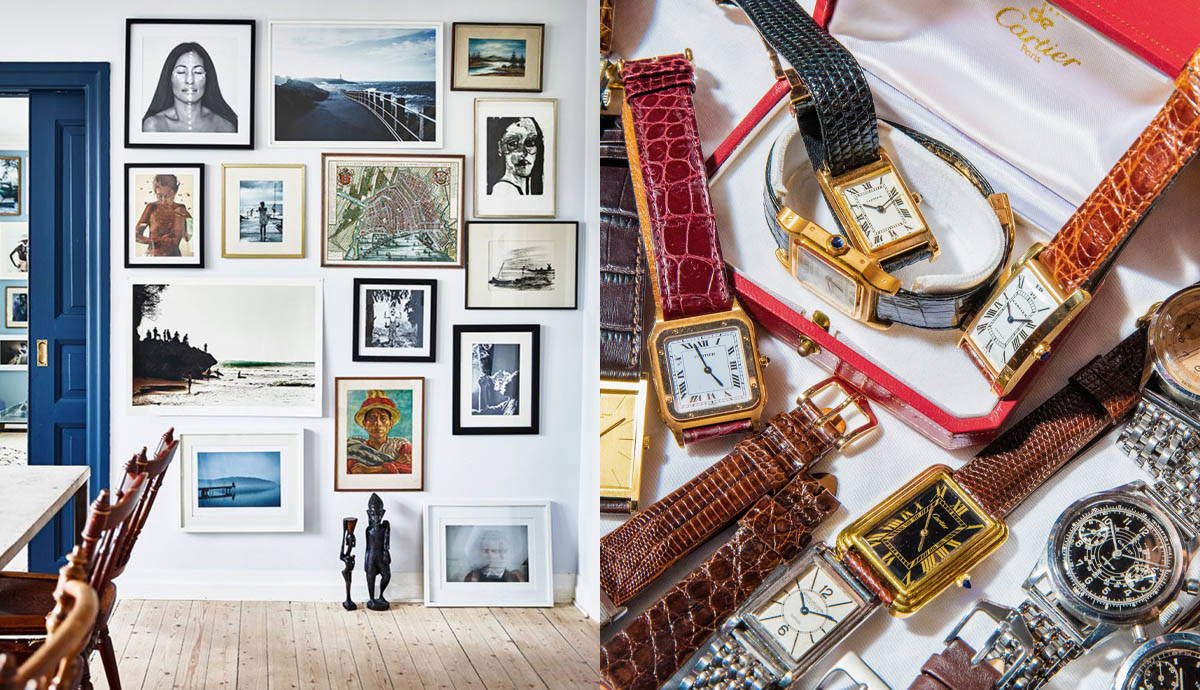
You can start a collection out of anything from antique music boxes to Beanie Babies. But your budget and network can change how easy it’ll be to start.
If you don’t live near major antiques or arts scene, you can still kick-start a collection with these five tips we gathered from experienced collectors.
1. Look at supply and demand

Some people amass giant collections of small items like bottle caps or Polaroid photos. These are because even though there’s plenty of supply for them, they are not in demand for the mainstream population. It’s not that small things aren’t charming or historical. People simply overlook them because they usually see them as mundane, throwaway trinkets. However, you can often find a niche within these categories to create something unique.
You can do this by looking for location-based items. For example, you could collect only Soviet Russian perfumes. To accomplish that, though, you would probably need a connection to the Russian market or population. This brings us to our next suggestion.
2. Consider if it’s too hard or too easy to collect

This tip depends on your personality. Some people like the chase of looking for a rare piece of Edwardian jewelry, or the only copy of an original comic book. If your goal is to focus on rarity, you might be content with a small collection or even a digital collection. However, others might prefer packing the biggest variety they can. There are some categories where you can find a happy medium, though.
Locket jewelry has been very popular in Europe. Designers started making them in the 16th century, and buyers often filled them with pictures of loved ones to honor those who passed away. Lockets were available for middle to high-class budgets. You could collect brass-made and oval-shaped ones to start your collection, as those were more affordable at the time. As you advance, though, you might enjoy the chase of looking for those made of gold or precious stones.
3. Start small and simple

There’s a lot of reasons it’s best to dip your toes in a collection instead of diving in. First of all, you want to take the time to educate yourself on what you’re collecting. Imagine that you decide to collect Francs, France’s currency before it was replaced by the Euro in 1999. A counterfeit coin could change the value of your collectible, so it’s best to research how to tell real versus fake coins.
Making sure that you avoid fake items is something to be aware of in any collection. This goes especially if you collect something that goes on your skin, such as cosmetics. Counterfeit items can violate safety standards, making your item not only fake, but also toxic. Moreover, some people will dedicate a room or shelf to their collection as it grows. It’s hard to predict how large your assortment will get, so we recommend playing it by ear.
4. Tell people you’re a collector

Starting your collection small can help others help you make it bigger. People can surprise you with gifts to fulfill your collection or connect you to someone who knows your craft. This goes hand in hand with choosing something that’s not too large, expensive, or hard to find.
The only con of this is that your friends or family might not know about what to buy for you. If you’re close with someone, consider telling them about the history of everything you have so far.
Your listener may learn something new, and helps you progress your hobby. At minimum, you get a chance to share your passion with someone. To connect with people who could teach you instead, you might have to look online.
5. Join a community

Collecting communities are available in person and online. Look for local flea shops, antique stores, or conferences available in your area to find hidden gems. For instance, pen lovers might consider going to the annual San Francisco International Pen Convention.
Collectors could find sellers with hundreds of options for them, or connect with more experienced hobbyists. This opens you to a bigger network of websites and social media accounts that can keep you up to date with changes in your niche.
There are many websites dedicated to exclusively one hobby. AbeBooks would interest readers who want rare editions of novels. Some sites are dedicated to documenting each coin ever released in a nation, such as PCGS CoinFacts for U.S. currency.
You don’t have to limit yourself to niche sites, though. Amazon or eBay are places to buy rarities, if you know what you’re buying. In our article on the Most Valuable Comic Books by Era, we share a comic that sold on eBay for $3,207,752 in 2015. That hardly sounds accessible at first, but it was originally worth only 12 ¢. So sometimes even a casual item in your collection can become a treasure in the future.
Whatever first step you take to build your collection, approach it with a careful but open-minded attitude. Any debutant makes mistakes. But with more exposure, networking, and time, you’ll learn from these errors and refine your collection.







